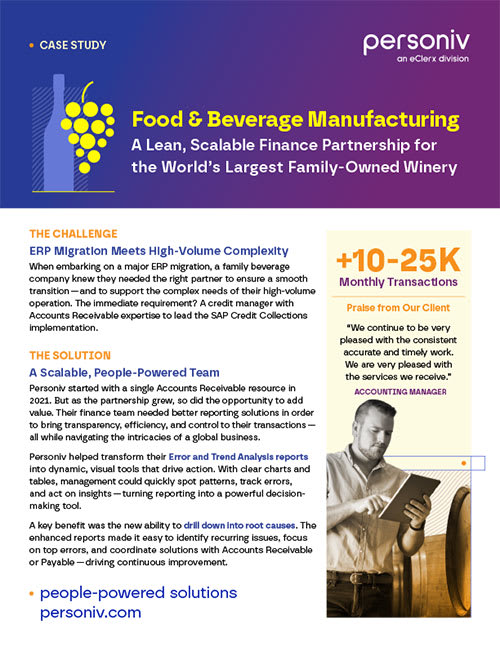Welcome to The Ledger where we sum up the latest finance and accounting news and trends for you. On this week’s entry, we’re diving into the topic of how to foster a balance between work and life post covid. Read on to explore how leaders can make work-life balance happen, what work-balance looks like post-covid, why HR leaders are moving towards work-life integration and how covid eliminated the work-life balance mentality.
How Leaders Can Make Work-Life Balance Happen
Many people struggle with finding a healthy medium between work and home. And for leaders, it’s no different. In fact, leaders struggle with dividing their time between working and living their life outside of work. Here are 5 facets that leaders juggle daily:
-
Spending time with family
-
Establishing meaningful friendships
-
Creating a fulfilling business path
-
Building connections
-
Establishing hobbies and interests
So how can leaders and the like achieve a healthy work-life balance?
-
Don’t check your emails after work
-
Be present with your family – your phone can wait
-
Make a to-do list for that day
-
Make a list of your top five friends and make time for them
-
Make plans with your family to do something weekly
-
Discover what makes for fun in your life
-
Ask your family and friends to hold you accountable for balancing work and life
To understand how to balance your time between work and life, read the full article on Forbes.com.
Work-Life Balance Post-Covid
As people begin to slowly return to the office, it’s imperative that businesses help their employees achieve a balance between work and home. And thanks to the pandemic, this is a challenge that can be seen across all industries. So what does a post-covid work-balance look like?
-
Flexible work. According to Elisa Nardi, CEO of Notebook Mentor, “Flexible working gives employees the control to plan their own working schedule. If starting work an hour earlier and finishing an hour earlier means they can spend their down-time doing more of what they love, then organizations need to consider being open-minded in allowing this.”
-
Career changes. According to Margo Manning, leadership and development coach, “Whilst money is a good driver, it is often not the main driver, it is a means to an end. Just chasing the big bucks can be demoralizing. It can also be physically and mentally draining when the individual aspires to be the person others want them to be, instead of doing something entirely different.”
-
New perspectives on time. Carmel Moore, director of The One Moment Company, said it best: “Time management is out of date. For businesses to thrive in the current climate they need to think about time in a more empowered way.”
-
A reset of personal boundaries. Karen Meager and John McLachlan, co-founders of Monkey Puzzle Training and Consultancy, think that putting a boundary on around one’s personal life or information can be done effectively without causing offense.
-
Early retirement. According to Logan Leckie, CEO of Topia, “Flexibility, choice and freedom are becoming the most treasured currency.”
To explore what a post-covid work-life balance looks like, head over to TheHRDirector.com to read the full article.
From Work-Life Balance to Work-Life Integration
Keeping a healthy work-life balance has proved to be more challenging than expected thanks to the pandemic. Sure, working from home has saved time on commute and money spent on lunches, but is remote work truly the best way to do your job? Moreover, is there truly a separation between work and home? With fewer physical and mental barriers between home and professional life, many workers are having a hard time maintaining a healthy balance. Here’s how HR can support employees’ work-life integration:
-
Flexibility in working hours
-
Focus on output rather than input
-
Regular breaks and time off
-
Employee wellness programs
-
Customized HR policies
-
Awareness programs and counseling services
-
Embrace asynchronous schedule
-
Clear communication
For an in-depth look at leaders can support their employees during and after a pandemic, read the full article on PeopleMatters.in.
How Covid-19 Eliminated Work-Life Balance for Good
A recent Becker Friedman Institute for Economics study showed that the new way of working boosted productivity by 5 percent. Once the pandemic hit, the term work-life balance faded out. Gone were the days of dressing up for work, commuting 2+ hours a day and working longer than 8 hours a day. In its place was the opportunity to do things we never thought possible and now that people have drank from the Kool-Aid, they never want to return to the old work-life balance. Dubbed the ‘Life-Work Revolution’, this paramount shift reverses work-life balance to put life first instead of work. And as this change begins to take place, companies will need to embrace it in order to stay ahead of the curve.
To learn more about this new equation and more about work-life balance post-covid, head over to Forbes.com to view the full article.
Our business solutions for companies that employ a hybrid work model (and a regular in-office one too).





















